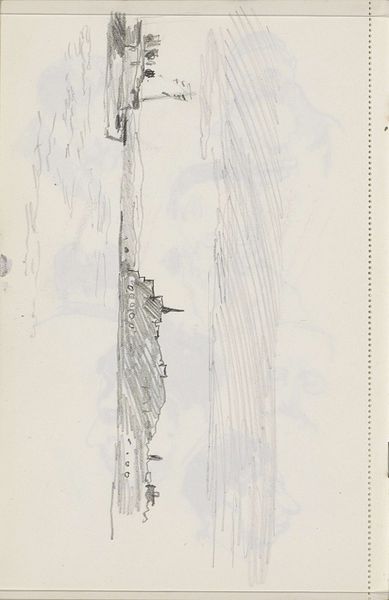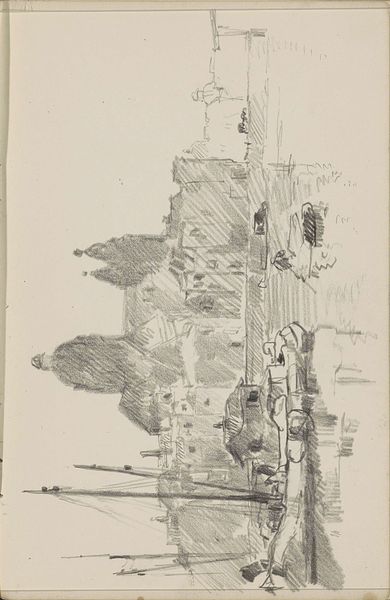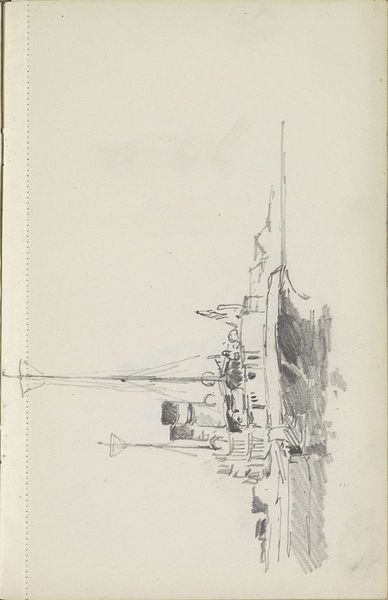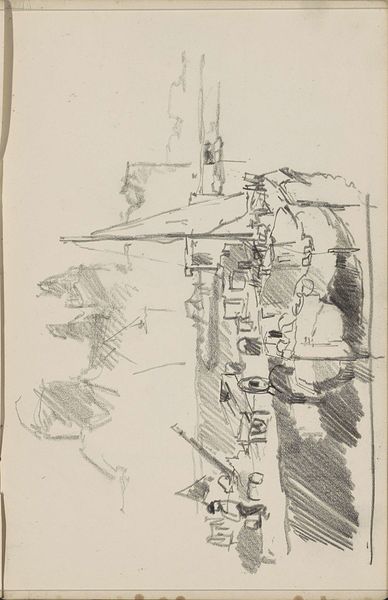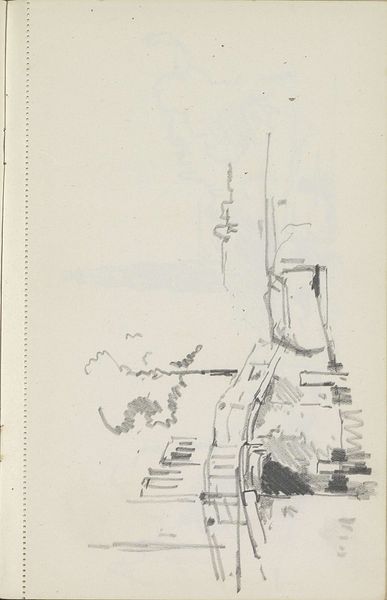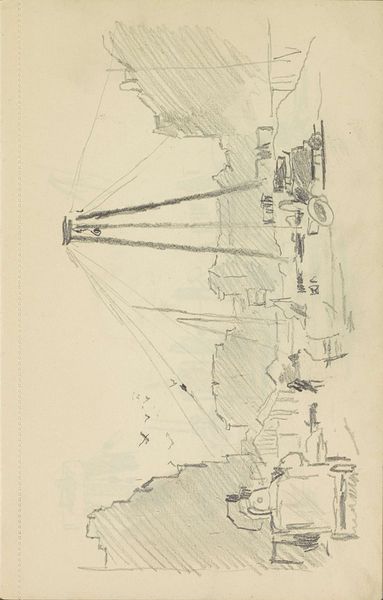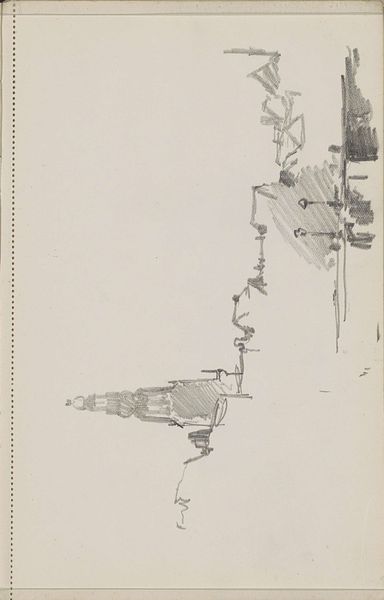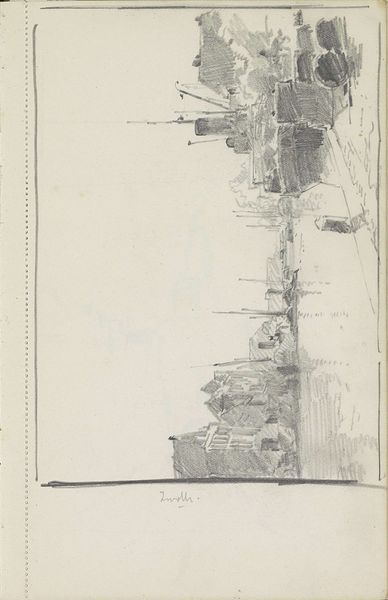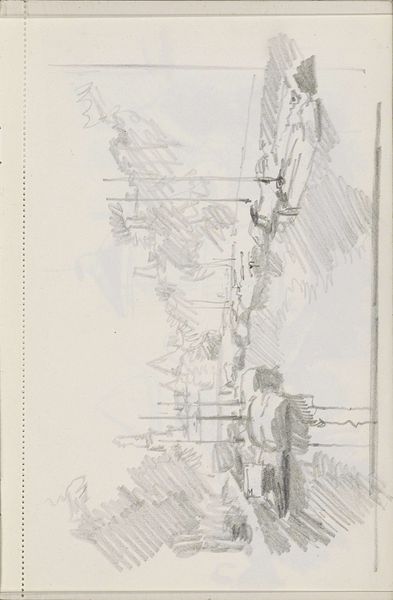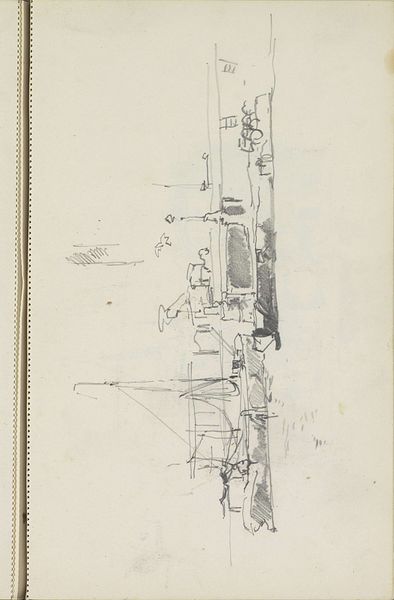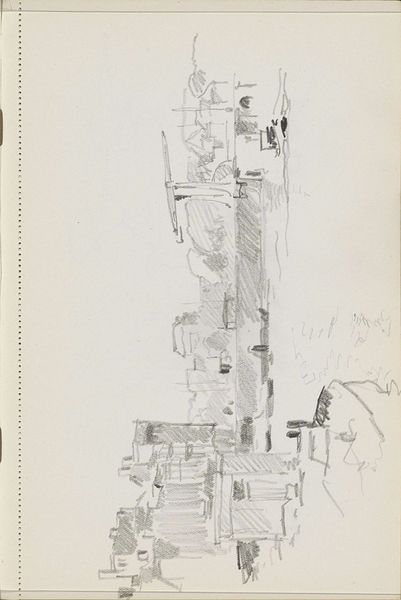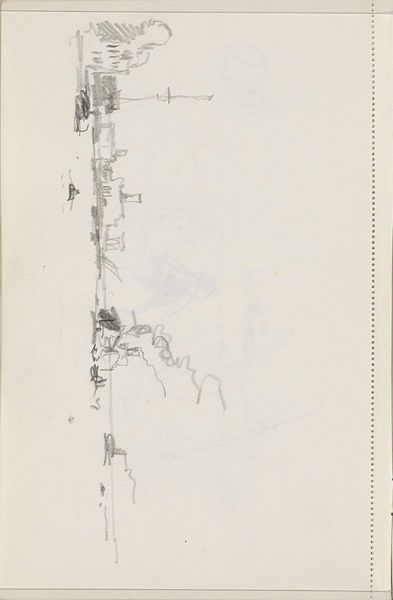
drawing, paper, pencil
#
drawing
#
landscape
#
paper
#
pencil
#
cityscape
#
realism
Copyright: Rijks Museum: Open Domain
Editor: This is Cornelis Vreedenburgh’s "Stadsgezicht te Amsterdam," or "Cityscape in Amsterdam," made sometime between 1890 and 1946. It's a pencil drawing on paper. The sketch feels incomplete, like a memory fading. What symbols or deeper meanings do you see embedded in this cityscape? Curator: That sense of fading is key. The cityscape, even in its fragmented state, is laden with the symbolic weight of urban life. Look at how the vertical lines dominate. Towers and masts – they pierce the sky. What do these upward thrusts represent to you? Editor: Maybe ambition, progress... or even a yearning for something beyond the everyday? Curator: Exactly. And the sharp angles, the abbreviated forms – they speak of the accelerated pace of modern life. But also, consider the medium: pencil on paper. A readily available, almost ephemeral medium, suggesting the constant flux of the city, its ever-changing identity. It’s a record, yes, but a fleeting one. What stories do you think Amsterdam holds? Editor: Stories of trade, of course. And resilience, having been a hub of art and intellectual exchange for centuries... it also was a battleground during the war. Curator: Precisely. A place layered with experience and struggle, but there are also the unseen people who would’ve moved throughout this city. You can feel this through this almost hidden perspective of the cityscape and wonder what’s missing from our understanding of it. This perspective hints at narratives beyond grand history. Does it spark new connections for you? Editor: Absolutely, it's less about monumental architecture and more about the life *around* the monuments, which makes it feel familiar despite the age. Curator: That tension between permanence and ephemerality really defines our relationship with cities, doesn’t it? A palimpsest of cultural memory.
Comments
No comments
Be the first to comment and join the conversation on the ultimate creative platform.
